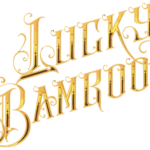Tattoos have been around in human culture for many thousands of years, some say as early as 5000 BC. The European Otzi tribe is attributed to be among the first. Buried underneath an Alpine glacier, a well preserved Otzi tribal member was discovered beneath the ice. Many parts of his body were covered in tattoos.
Some of the more historic ancestral tattoos can be found among the Maori, Polynesians, Norse and Celts. Although many other cultures historically have tattooing, most people attribute ancestral, or “tribal” tattoos to those four.
Some other notable cultures with a history of tattooing would be the Aborigines, Philippine tribes, Native Americans, Ainu People from Japan, New Guinea, Welsh, Incans and the Mayans.
Early tattoos were applied commonly with some sort of stick or rod, with a harder sharp tip, often made of turtle shell, clam/oyster shell, bones, fish bones, thistle and teeth. The end would be tapped into the skin, applying the ink. Some tribes that exist today still use this method.
Ancestral, or “tribal” tattoos often had and still have meaning behind them. A coming of age. A victory over an enemy. A successful hunt. And so on it goes. In some cultures, getting an ancestral tattoo that you have no real connection to is frowned upon. Sometimes the smallest nuance in one of these tattoos symbolizes something much greater than may appear.
